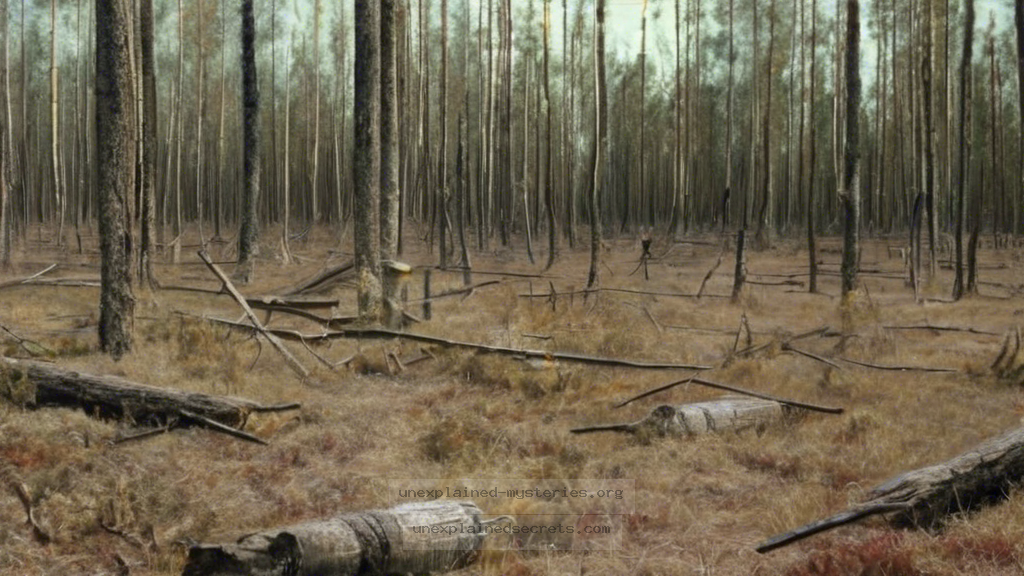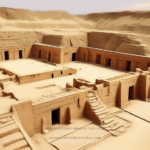What Are the Secrets Behind the Tunguska Event: An Unexplained Scientific Anomaly?
What Are the Secrets Behind the Tunguska Event: An Unexplained Scientific Anomaly?
The Tunguska Event, which occurred on June 30, 1908, in Siberia, is one of the most compelling scientific anomalies in history. With an energy release estimated to be equivalent to 10-15 megatons of TNT, this mysterious explosion flattened approximately 2,000 square kilometers of forest and continues to baffle scientists and researchers alike. Understanding the Tunguska Event is crucial because it raises questions about cosmic threats and our planet’s vulnerability to extraterrestrial phenomena. In this post, we will explore the details, theories, and implications of this enigmatic event.
Historical Context of the Tunguska Event
Before delving into the scientific anomalies surrounding the Tunguska Event, it is important to understand its historical context. The event took place in a remote area of Siberia, near the Tunguska River. Despite the significant explosion, the region was sparsely populated, and initial reports were limited. It wasn’t until 1927 that a Soviet scientific expedition led by Leonid Kulik reached the site to investigate. The team found a forest flattened in a radial pattern, with trees knocked down and charred.
The isolation of the area meant that the full impact of the event was not understood until decades later. Witnesses described a bright flash, followed by a powerful shockwave that knocked people off their feet. This incident raised questions about the nature of explosions and their potential causes. As the investigation progressed, researchers proposed various theories, each more intriguing than the last.
Core Concepts and Theories Surrounding the Event
Several theories have been put forth regarding the cause of the Tunguska Event. The most widely accepted explanation suggests that it was caused by the airburst of a small comet or asteroid. When an object from space enters the Earth’s atmosphere, it encounters immense friction, causing it to explode before reaching the ground. This is supported by the lack of a sizeable impact crater at the site.
In addition to the cosmic object theory, other hypotheses include a volcanic explosion or even a nuclear reaction caused by natural phenomena. However, these alternatives lack substantial evidence when compared to the asteroid or comet theory. The explosion’s characteristics—such as the shockwave’s size and the heat generated—align more closely with an extraterrestrial impact.
Practical Implications of the Tunguska Event
The implications of the Tunguska Event extend beyond mere curiosity; they have significant ramifications for planetary defense strategies. The event serves as a reminder of the potential dangers posed by near-Earth objects (NEOs). With thousands of asteroids and comets in our solar system, understanding their trajectories and potential for Earth impact is critical for humanity’s safety.
Recent advancements in technology have allowed scientists to detect and track these objects more effectively. Initiatives like NASA’s Planetary Defense Coordination Office are dedicated to monitoring NEOs and developing potential mitigation strategies. The Tunguska Event underscores the importance of these efforts, as a similar event today could lead to catastrophic consequences.
Alternative Perspectives on the Event
While the asteroid or comet theory is predominant, alternative perspectives exist. Some researchers suggest that the explosion could have been caused by a natural gas eruption or a meteorological phenomenon. For example, the idea of “ball lightning” or even a small black hole has been proposed, albeit with limited scientific backing.
These alternative theories often spark debate within the scientific community. They highlight the necessity for an open-minded approach when investigating unexplained phenomena. While the cosmic object theory is favored, considering other possibilities can lead to new insights and understandings that enrich the scientific discourse.
Common Misconceptions About Tunguska
Several misconceptions surround the Tunguska Event, often fueled by sensationalist media or anecdotal evidence. One common myth is that the explosion was caused by an atomic bomb, which is unfounded given the historical context and lack of nuclear technology at the time.
Another misunderstanding is the scale of the destruction. While the flattened forest area is vast, some estimates exaggerate the damage, leading to inflated perceptions of the event’s impact. It is crucial to differentiate between verified scientific findings and speculative narratives to maintain a clear understanding of the event.
Best Practices for Investigating Such Anomalies
Investigating scientific anomalies like the Tunguska Event requires a rigorous and methodical approach. Here are some best practices that researchers should consider:
- Multi-disciplinary Collaboration: Engaging experts from various fields—such as astrophysics, geology, and atmospheric science—can provide a comprehensive understanding of the phenomenon.
- Field Research: Conducting on-site investigations is vital for gathering primary data. This includes analyzing soil samples, tree rings, and geological formations.
- Utilizing Technology: Employing modern technology, such as satellite imagery and remote sensing, can enhance data collection and analysis.
- Publishing Findings: Sharing research through peer-reviewed journals ensures transparency and allows for constructive feedback from the scientific community.
Future Developments and Ongoing Research
The Tunguska Event remains a subject of active research, with ongoing explorations aimed at uncovering more about its nature and implications. New technologies and methodologies are being developed to enhance our understanding of cosmic risks. For instance, advancements in asteroid detection and tracking systems are crucial for planetary defense initiatives.
Moreover, as research progresses, scientists are working to improve models that predict the potential impact of NEOs. The continued study of historical events like Tunguska helps refine these models, allowing for better preparedness in the face of cosmic threats.
Conclusion
The Tunguska Event is a captivating scientific anomaly that continues to intrigue researchers and provoke thought about our place in the universe. By examining the historical context, core theories, and practical implications, we gain insights into the potential dangers posed by extraterrestrial objects. Understanding the nature of such events not only enhances our scientific knowledge but also informs strategies for protecting our planet. As research continues, the secrets of the Tunguska Event may one day be fully revealed, shedding light on the mysteries of the cosmos.
Other Articles
Recent Posts
- What Happened to Flight MH370? The Conspiracy Theories That Still Haunt Us
- What Secrets Lurk Within the Walls of the Infamous Trans-Allegheny Lunatic Asylum?
- What Evidence Supports the Existence of Bigfoot in the Pacific Northwest?
- What Happened to the Indus Valley Civilization? Unraveling the Mysteries of Ancient Urban Life
- Can Telepathy Be Scientifically Proven Through Laboratory Evidence?







